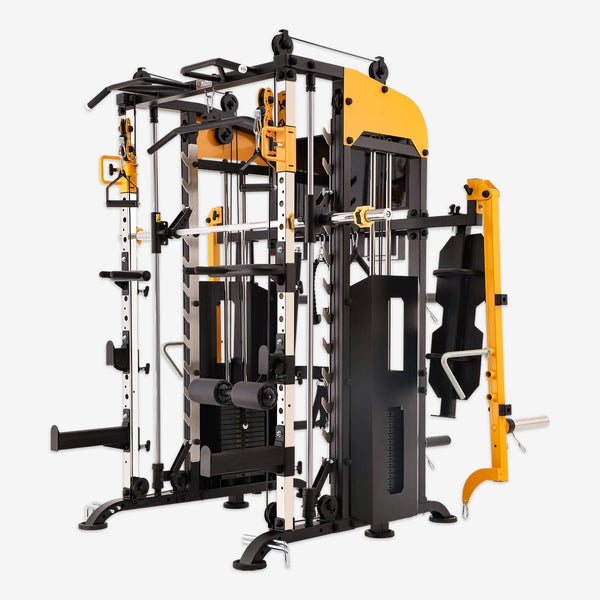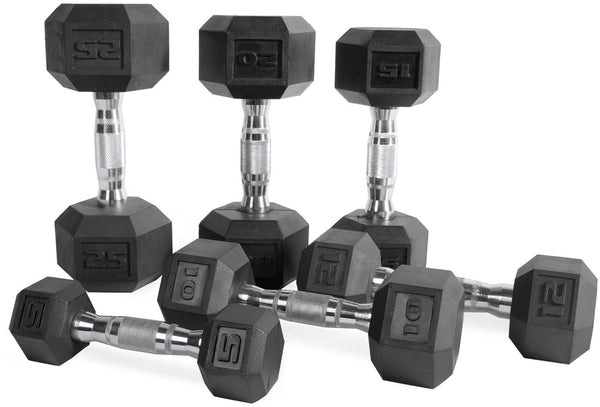Your Cart is Empty
May 17, 2023 4 min read
The chest is one of the most important muscle groups for bodybuilders and gym goers alike, and training it correctly is essential for achieving maximum gains. But before you can begin to train your chest effectively, it’s important to have a good understanding of the anatomy of the chest, including the muscles that make up the pectoral group and how they are connected to other parts of the body.
Shop The Collection: Smith MachinesThe chest consists of two main muscles – the pectoralis major and the pectoralis minor. The pectoralis major is the larger of the two muscles, and is responsible for the majority of the chest’s movement and strength. It originates from the clavicle and sternum and inserts onto the humerus (upper arm bone). This muscle is primarily responsible for pushing and pulling movements, such as when performing the bench press or push-ups. The pectoralis minor is much smaller than the pectoralis major, and lies beneath it. This muscle originates from the ribs and connects to the shoulder blade, and is primarily responsible for stabilizing the shoulder joint.
 Shop The Gear: Altas AL-3061B All-in-One Smith Machine, $3,849.99 USD
Shop The Gear: Altas AL-3061B All-in-One Smith Machine, $3,849.99 USD
Now that you have a better understanding of the anatomy of the chest, let’s take a look at some basic exercises that will help you get the most out of your chest workouts. Before beginning any exercise routine, always make sure to warm up with five to ten minutes of light cardio to get the blood flowing and reduce the risk of injury.
Shop The Collection: DumbbellsPush-ups are a great way to strengthen and tone the chest muscles without the need for any equipment. To perform a basic push-up, start in a plank position with your hands and feet on the ground. Lower your chest towards the ground until your elbows are bent at a 90 degree angle, then slowly push your body back up to starting position. As you become stronger, you can increase the difficulty by changing your hand position (narrow or wide) or adding a clap between each rep. Push-ups are a versatile exercise that can be done anywhere and requires minimal space, making them ideal for those who don’t have access to a gym.
 Shop The Gear: CAP Barbell Rubber Hex Dumbbells, from $3.99 USD
Shop The Gear: CAP Barbell Rubber Hex Dumbbells, from $3.99 USD
The bench press is one of the most popular chest exercises, and for good reason. It targets the pectoralis major, as well as the triceps, biceps, and shoulders. To perform the bench press, start by lying down on a flat bench with your feet flat on the floor. Grip the barbell with an overhand grip that is just wider than shoulder width apart. Slowly lower the barbell to your chest, hold for a second, and then press the weight back up to starting position. Make sure to keep your elbows tucked in close to your body throughout the movement to maximize muscle activation.
The incline bench press is similar to the standard bench press, however the angle of the bench is slightly elevated. This increases the difficulty of the exercise, as it targets the upper chest muscles. To perform the incline bench press, start by positioning yourself on an inclined bench with your feet flat on the floor. Grip the barbell with an overhand grip that is just wider than shoulder width apart. Slowly lower the barbell to your chest, hold for a second, and then press the weight back up to starting position. Make sure to keep your elbows tucked in close to your body throughout the movement to maximize muscle activation.
Dumbbell flyes are a great exercise for isolating the chest muscles and developing chest definition. To perform this exercise, start by lying down on a flat bench with a pair of dumbbells in each hand. With your arms straight out to the side, slowly bring the weights together in a semicircular motion until they meet in the middle. Hold for a second and then slowly lower the weights back to starting position. Make sure to keep your arms slightly bent throughout the entire movement to avoid strain on the elbow joints.
Training your chest for maximum gains takes dedication and patience, but with the right approach, you can achieve amazing results. Here are some tips for getting the most out of your chest workouts:
The chest is one of the most important muscle groups for bodybuilders and gym goers alike, and training it correctly is essential for achieving maximum gains. Knowing the anatomy of the chest and how the muscles work together is key for optimal results. In addition, there are several exercises that can be used to target the chest muscles, such as push-ups, bench presses, and dumbbell flyes. Finally, following the tips outlined above can help you get the most out of your chest workouts and achieve maximum gains.
Shipping Protection gives you peace of mind while saving you time and money.
Shipping Protection provides coverage for eligible orders that are lost or damaged in transit, or stolen after delivery has been confirmed by the carrier. MAGMA Fitness, through its partners, administers the protection program and may receive compensation for these services. Coverage is subject to the terms, conditions, and exclusions outlined in our Shipping Protection Terms & Conditions.